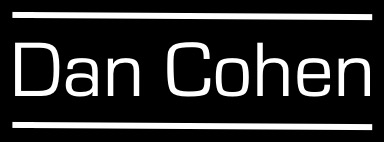In my prior post on this topic, I mentioned the (paid) positions now available at the Center for History and New Media to work on and promote Zotero. (By the way, there’s still time to contact us if you’re interested; we just started reviewing applications, but hurry.) But Zotero is moving ahead on so many fronts that its success depends not only on those working on it full time, but also those who appreciate the software and want to help out in other ways. Here are some (unpaid, but feel-good) ways you can get involved.
If you are a librarian, instructional technologist, or anyone else on a campus or at an institution that uses citation software like EndNote or RefWorks, please consider becoming an informal campus representative for Zotero. As part of our effort to provide a free competitor to these other software packages, we need to spread the word, have people give short introductions to Zotero, and generally serve as local “evangelists.” Already, two dozen librarians who have tried Zotero and think it could be a great solution for students, staff, and faculty on their campuses have volunteered to help out in this role. If you’re interested in joining them, please contact campus-reps@zotero.org.
We are currently in the process of writing up instructions (and possibly creating some additional software) to make creating Zotero translators and citation style formatters easier. Translators are small bits of code that enable Zotero to recognize citation information on a web page; we have translators for specific sites (like Amazon.com) as well as broader ones that recognize certain common standards (like MARC records or embedded microformats). Style formatters take items in your Zotero library and reformat them into specific disciplinary or journal standards (e.g., APA, MLA, etc.). Right now creating translators takes a fair amount of technical knowledge (using things like XPath and JavaScript), so if you’re feeling plucky and have some software skills, email translators@zotero.org to get started on a translator for a specific collection or resource (or you can wait until we have better tools for creating translators). If you have some familiarity with XML and citation formatting, please contact styles@zotero.org if you’re interested in contributing a style formatter. We figure that if EndNote can get their users to contribute hundreds of style formatters for free, we should be able to do the same for translators and styles in the coming year.
One of our slogans for Zotero is “Citation management is only the beginning.” That will become increasingly obvious over the coming months as third-party developers (and the Zotero team) begin writing what we’re calling utilities, or little widgets that use Zotero’s location in the web browser to send and receive information across the web. Want to pull out all of the place names in a document and map them on Google Maps? Want to send del.icio.us a notice every time you tag something in Zotero? Want to send text from a Zotero item to an online translation service? All of this functionality will be relatively trivial in the near future. If you’re familiar with some of the browser technologies we use and that are common with Web 2.0 mashups and APIs and would like to write a Zotero utility, please contact utilities@zotero.org.
More generally, if you are a software developer and either would like to help with development or would like to receive news about the technical side of the Zotero project, please contact dev@zotero.org.
With Firefox 2.0 apparently going out of beta into full release next Thursday (October 26, 2006), it’s a great time to start talking up the powerful combination of Firefox 2.0 and Zotero (thanks, Lifehacker and the Examiner!).

